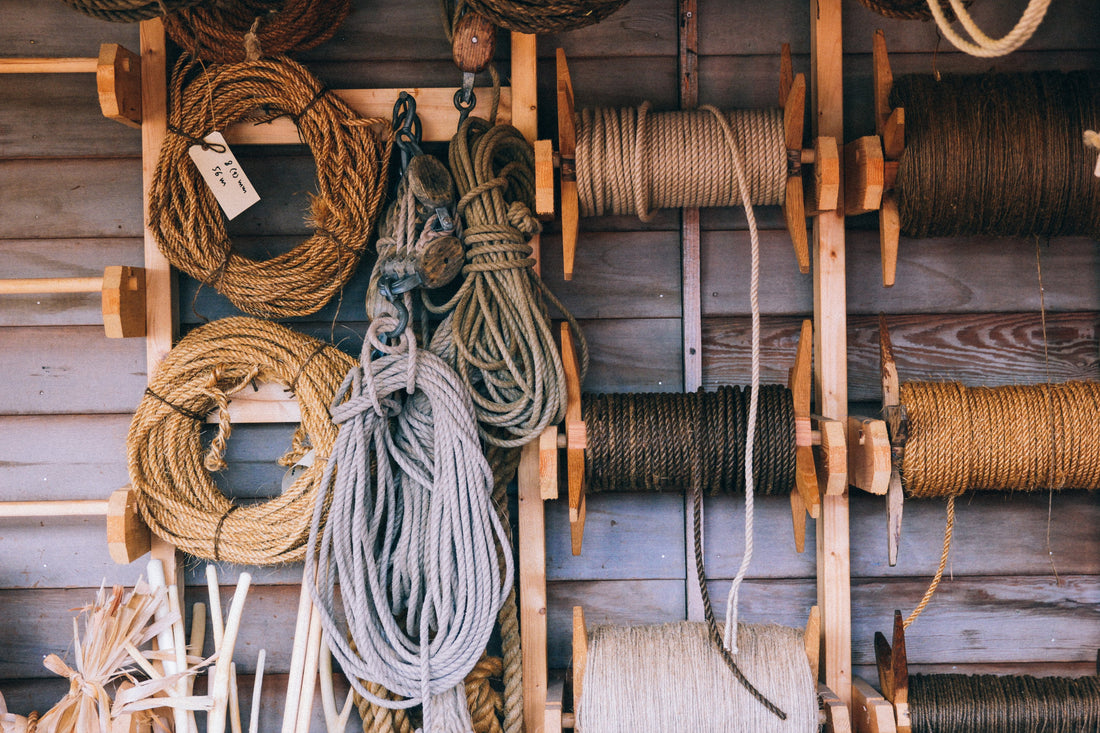For an experienced skipper or crew member, tying the right knot for the task at hand is often a point of pride and safety, and security. Are you attaching a new anchor? You’ll want to use an anchor bend, of course. Are you tying up to a dock? Then a cleat hitch or rolling hitch might be in order.
On the other hand, Beginner boaters sometimes seem overwhelmed when it comes to boating knots, and who could blame them? There are dozens of specialized knots used to do everything from making vessels fast to pilings to stowing a coiled rope in a tidy manner so it will be at the ready whenever needed.
While many knots excel at a dedicated function, others are versatile enough to be used in various situations. That means you only have to master a few basic ones to get started. Still, like anything else in the boating world, it’s best to putter before your cruise.
Following are five essential knots all boat owners and crew members should know. Master these, and you should be fine in most situations. Add a couple of new ones to your repertoire each year, and you’ll soon know enough knots to handle any on-the-water situation.
1. The Cleat Hitch
Used to tie boats and PWC to docks, bulkheads, and boat lifts via cleats, this knot is quick, easy to do, and doesn’t slip. For many, it’s the first boating knot to master.
1. Wrap the line entirely around the far horn (arm) of the cleat.
2. Pull the line over the near horn and wrap it under the far horn again.
3. Wrap the line under and then over the first horn again to form a figure-eight pattern.
4. Form an underhand loop and slip it over the near horn.
5. Pull the free end of the rope tight to secure the knot firmly.
2. Rolling Hitch
This easy-to-tie knot is used for fastening a rope to a piling, pole, or even a tree.
1. Wrap the tag end of the line entirely around a secure piling or pole. The tag end should cross over the fixed-line.
2. Wrap the tag end of the line entirely around the piling or pole a second time, again crossing over the fixed-line.
3. Make a third wrap around the piling or pole but keep this wrap above the fixed-line.
4. Slip the tag end of the line under the third wrap and pull tight to secure.
3. Double Half Hitch
Perhaps the simplest boating knot to tie, a double half-hitch is nothing more than two half hitches (overhand knots) tied side-by-side. This knot is great for securing a small boat to a horizontal post or as a support knot to ensure another knot will not slip. Some boaters tie a single-half hitch but are aware that this can slip, making the double-half hitch a far better knot to choose under most circumstances.
1. Wrap the tag end of the rope around the post and secure with a simple overhand knot (half hitch).
2. Tie a second half hitch alongside the first (the tag line should thread between the line loops).
3. Pull the tag end tight to secure.
4. Anchor Bend
The anchor bend sometimes called an anchor hitch, is used to fasten an anchor to its rope. The tag end after finishing the knot is best secured with seizing but adding a double half hitch will do in a pinch.
1. Wrap the tag end loosely twice around the anchor shackle, being sure to leave enough tag end for finishing the knot.
2.Pass the tag end behind the standing line and then bring it through both loops in front of the fixed-line.
3. Wrap the tag end around the standing line again, passing it beneath the new loop to form a half hitch.
4. Pull the tag end to tighten the knot securely.
5. Seize the tag end to secure the knot or use a double half hitch knot as temporary reinforcement to ensure the anchor bend does not loosen and pull free.
5. Sailor’s Coil
The Sailor’s Coil relies on a couple of half hitches to securely keep a rope coiled so it will be easy to grab, transport, and make ready without unraveling.
1. With the rope neatly coiled, make a half hitch around the top section of the coil.
2. Pull the tag end relatively tight and make a second-half hitch.
3. Pull the tag end tight again to snug up the knot and keep the coil neatly secured.
4. If you want additional security, you can now tie a double half hitch knot with the remaining tag end of the line.


